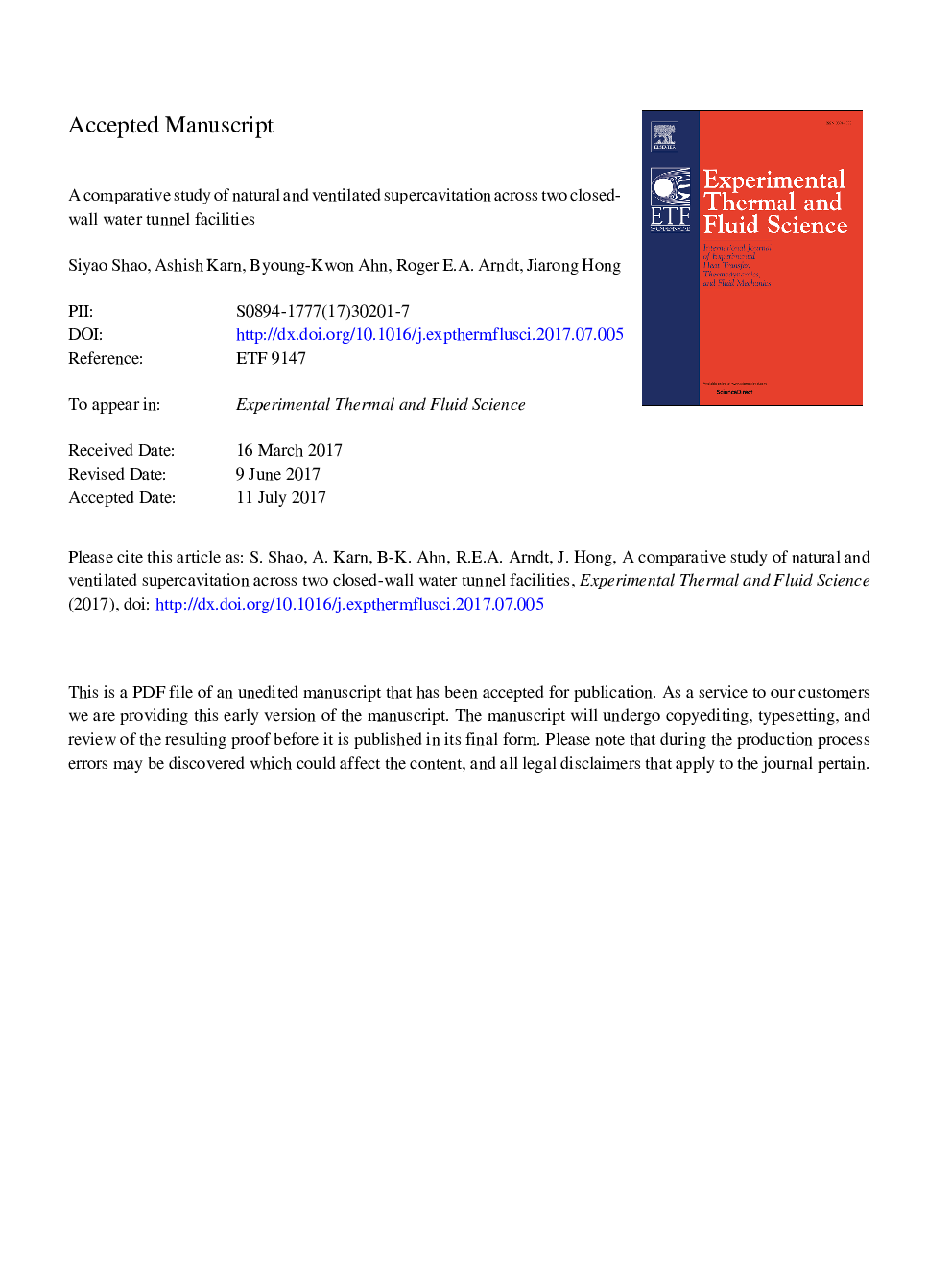| کد مقاله | کد نشریه | سال انتشار | مقاله انگلیسی | نسخه تمام متن |
|---|---|---|---|---|
| 4992605 | 1457388 | 2017 | 38 صفحه PDF | دانلود رایگان |
عنوان انگلیسی مقاله ISI
A comparative study of natural and ventilated supercavitation across two closed-wall water tunnel facilities
ترجمه فارسی عنوان
مطالعه تطبیقی ابرکاوییت طبیعی و تهویه در دو تونل آب بسته شده
دانلود مقاله + سفارش ترجمه
دانلود مقاله ISI انگلیسی
رایگان برای ایرانیان
کلمات کلیدی
سوپرکاباسیون، تهویه تشکیل حفره، انسداد، تونل آب دیواری بسته
موضوعات مرتبط
مهندسی و علوم پایه
مهندسی شیمی
جریان سیال و فرایندهای انتقال
چکیده انگلیسی
Despite half a century of experimental investigation into both natural and ventilated supercavitation, there are still significant discrepancies among the results, in terms of supercavity geometry and ventilation demand, etc., under approximately similar conditions from different water tunnel facilities. To understand the influences of the flow facilities on the supercavitation experiments, a systematic comparison is conducted using the results from two closed-wall water tunnels, i.e. the Saint Anthony Falls high-speed water tunnel and the Chuangnam National University Closed Tunnel. For both ventilated and natural supercavitation, the experimental conditions from the two facilities are designed to match over a wide range of Froude number and blockage ratio, etc. For the ventilated supercavitation, the cavitation number for generating a ventilated supercavity and the hysteresis process for sustaining a supercavity show a proper match across the two facilities while holding the Froude number and blockage ratio constant. However, the ventilation demand to form a supercavity shows a noteworthy difference across the facilities even under the same Froude number and blockage ratio. Such a difference in the ventilation requirement is attributed to the mismatch of Reynolds number, the detailed geometry of the cavitator models as well as the test section which influences the pressure distribution along the span of the supercavity. Similarly, for natural supercavitation, both facilities yield a similar vaporous cavitation number for the supercavity formation under the same Froude number and blockage ratio, as well as similar choking behavior, i.e. cavitation number stays constant despite the decrease of test section pressure once a natural supercavity forms. The theoretical analysis of the choking phenomenon explains the trend of cavitation number under choking and its dependence on cavitator geometry, Froude number as well as the pressure loss in the water tunnel. A geometry comparison is conducted for both natural and ventilated supercavities in the two facilities under the same Froude number, blockage ratio and cavitation number. The comparison results show differences in the normalized cavity total length across different facilities as well as supercavity types despite the similarities in the supercavity maximum diameter and half-length. These differences were attributed to the variance in the pressure and flow distributions from the different facilities and across ventilated and natural supercavitation. The natural supercavities from the two facilities are further compared with the estimated natural supercavitation in unbounded flow under the same cavitation conditions. The comparison result highlights the limitation of the conventional theory in capturing the cavity geometries in actual experiments.
ناشر
Database: Elsevier - ScienceDirect (ساینس دایرکت)
Journal: Experimental Thermal and Fluid Science - Volume 88, November 2017, Pages 519-529
Journal: Experimental Thermal and Fluid Science - Volume 88, November 2017, Pages 519-529
نویسندگان
Siyao Shao, Ashish Karn, Byoung-Kwon Ahn, Roger E.A. Arndt, Jiarong Hong,
